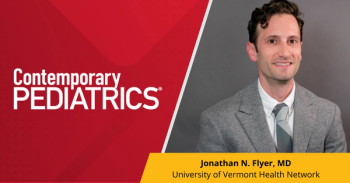
8 gut reactions to common problems
Here is helpful advice gleaned from my experiences with C diff, diarrhea, colic, reflux, and other things gastroenterological.
1. The BRAT diet (bananas, rice, apples, tea, and toast is what I was taught it meant) is still popular among parents and physicians for treating diarrhea, but I am not aware of any good evidence that it is effective. These BRAT foods are fine for diarrhea, but they do not need to be the mainstay. Unless a child clearly has a significant lactase deficiency, I recommend a regular diet, including dairy, except I stay away from fruit juice. The diarrhea may get worse before it gets better, but the improved diet leads to a quicker response.
2. Calprotectin of the stool is a useful test for inflammation1; it is the C-reactive protein of stool. However, it is important to remember that the value can be increased by protein pump inhibitors and histamine 2 blockers.
3. Do not test for Helicobacter pylori serology in children2; the test is prone to false negatives and positives. Stool testing is better, if needed. Even then, do not test in children with functional abdominal pain as there are many false positives.
4. As with biopsy, one must be on a gluten-containing diet at the time of testing for a tissue transglutaminase antibodies (tTG)-immunoglobulin (Ig)A result to be accurately interpreted for celiac disease.3
5. Enzyme-linked immunosorbent assay (EIA) and polymerase chain reaction (PCR) testing for Clostridium difficile are more accurate than a culture. Remember, the C diff test is often positive in children aged younger than 1 year, without indicating actual clinical infection.4
6. Hemorrhoids are very rare in young children. If the parents think they have seen a hemorrhoid, they are more likely to have witnessed rectal prolapse.
7. Physicians will often prescribe histamine-2 blockers and proton pump inhibitors for colic on the assumption that it is because of reflux. The evidence for this is very weak. I still try them because they are considered standard of care, but I have the parents stop them if they are not clearly effective after 1 week. I am old school, and on very rare occasions will use hyoscyamine for infants (and their parents) who are absolutely miserable, and it has seemed to work at times. I warn the family that only 1 adult is to give this, and they are not to give it more often than prescribed because of the risk of overdose.
8. Spicy foods do not need to be avoided in children with gastroesophageal reflux, unless they are clearly causing problems.
REFERENCES
1. Rosso C, Caviglia GP, Pellicano R. Usefulness of fecal calprotectin determination in pediatric intestinal diseases. Minerva Pediatr. 2016;68(6):478-486.
2. Koletzko S, Jones NL, Goodman KJ, et al; H pylori Working Groups of ESPGHAN and NASPGHAN. Evidence-based guidelines from ESPGHAN and NASPGHAN for Helicobacter pylori infection in children. J Pediatr GastroenterolNutr. 2011;53(2):230-243.
3. Husby S, Koletzko S, Korponay-Szabó IR, et al; ESPGHAN Working Group on Coeliac Disease Diagnosis; ESPGHAN Gastroenterology Committee; European Society for Pediatric Gastroenterology, Hepatology, and Nutrition. European Society for Pediatric Gastroenterology, Hepatology, and Nutrition guidelines for the diagnosis of coeliac disease. J Pediatr Gastroenterol Nutr. 2012;54(1):136-60. Erratum in: JPediatr Gastroenterol Nutr. 2012;54(4):572.
4. Schutze GE, Willoughby RE; Committee on Infectious Diseases; American Academy of Pediatrics. Clostridium difficile infection in infants and children. Pediatrics. 2013;131(1):196-200.
Dr Farber is a pediatrician in Woodbridge, Virginia. He has nothing to disclose in regard to affiliations with or financial interests in any organizations that may have an interest in any part of this article.
Newsletter
Access practical, evidence-based guidance to support better care for our youngest patients. Join our email list for the latest clinical updates.









